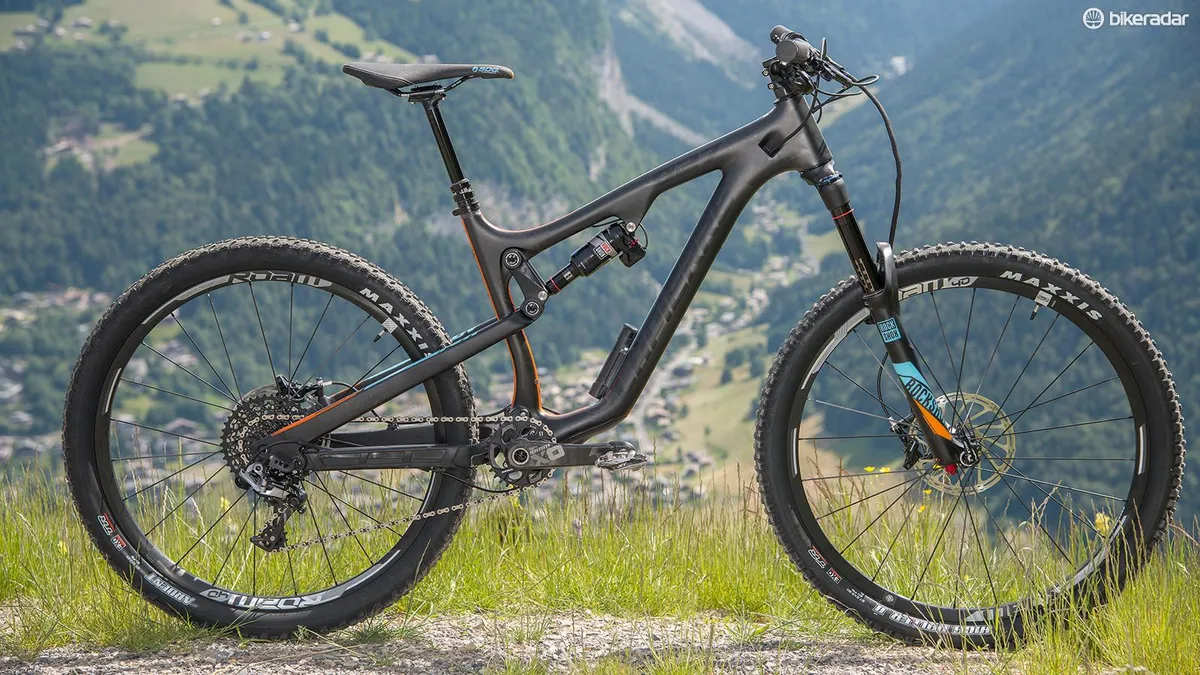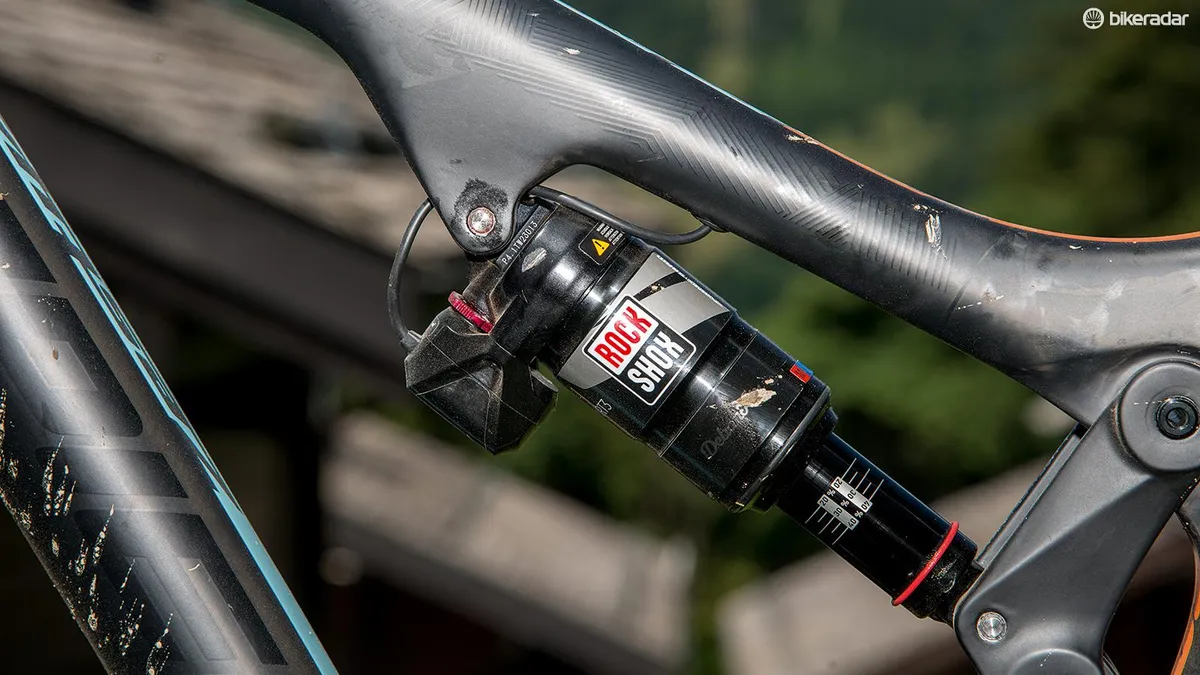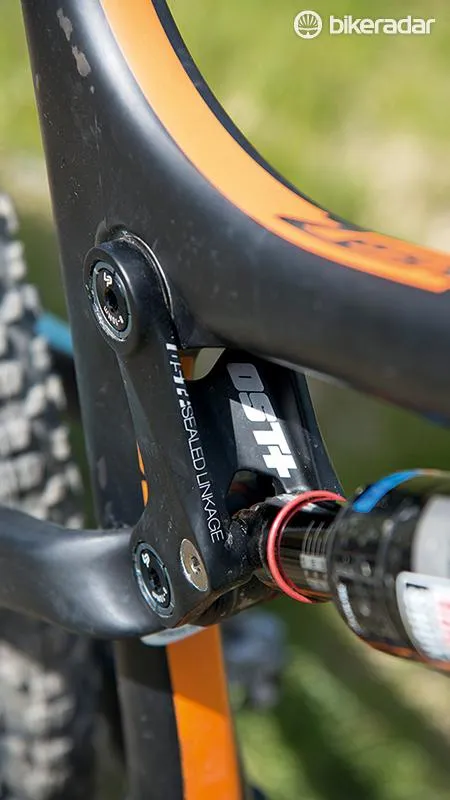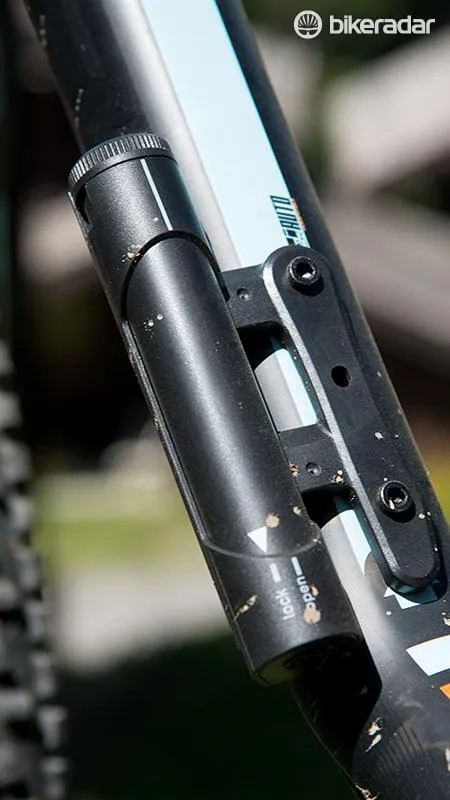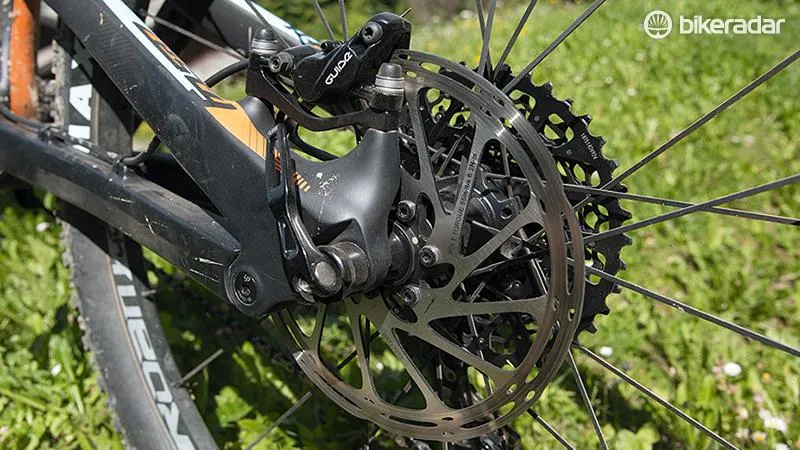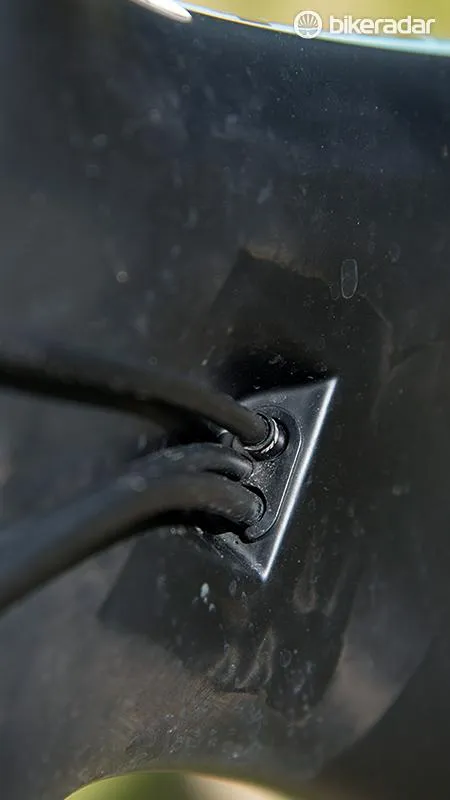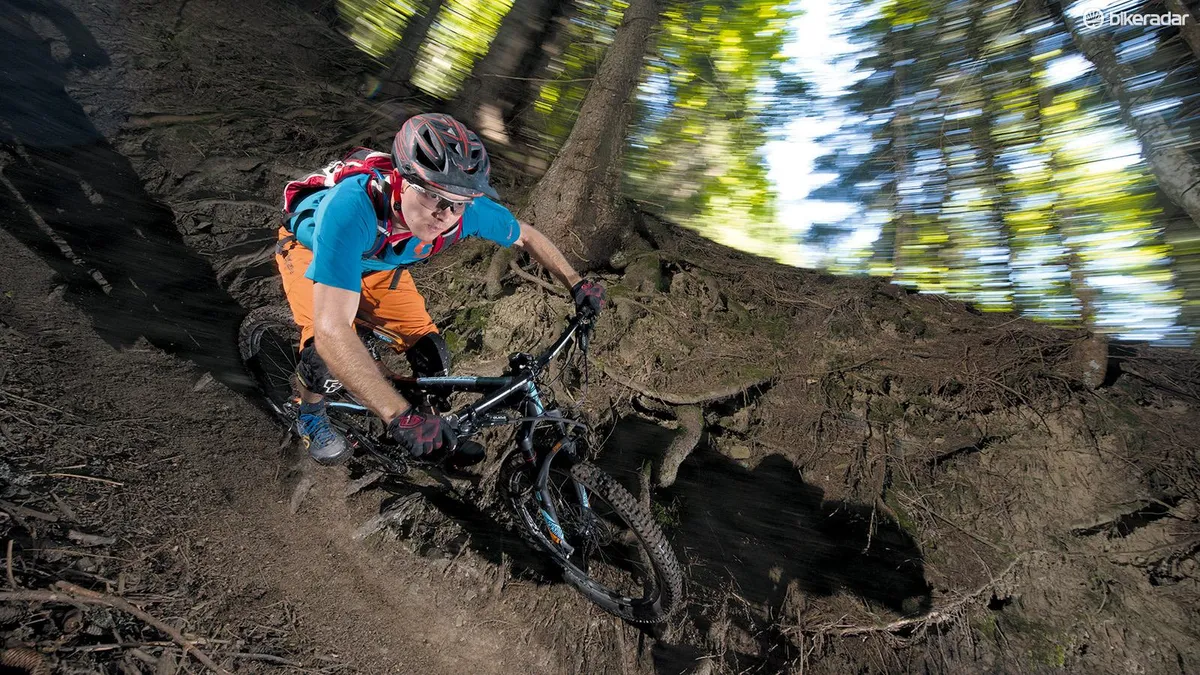Lapierre’s Zesty was the trail bike du jour for a number of years, but when it switched to 650b wheels it was left trailing slightly by the competition. This all-new model aims to put the French brand back on top, with numerous tweaks that turn it into a real all-round contender – though it requires deep pockets.
Unable to load Media
Unable to load Media
Unable to load Media
Tip-top tech
While the side profile of the bike may look similar, a lot of work has gone on. The frame has grown longer, with a medium sized bike now having a decently long 610mm top tube, up 5mm from last year. The head angle is also relaxed half a degree to 66.5, while the own-brand Lapierre bar and stem have gone wider and shorter at 760mm and 55mm respectively.
Related: Lapierre Zesty gets reworked for 2016
Elsewhere, the spec is decent, if not startling value for the cash. SRAM provides an 11-speed, single ring X1/X01 mix drivetrain while the Guide R brakes with 180mm rotors do a solid enough job of hauling you up sharply on most trails, though if you dabble in big mountains you may want bigger rotors.
Lapierre has improved tyre clearance by 10mm while sorting a previous bugbear of overly wide chainstays that many riders found snatched at their heels. The bike uses a standard 142x12mm rear end rather than a Boost 148, which is no big deal.
We would rather see a Maxle or Shimano-style thru-axle at the back, as the unbranded one is a little bit fiddly to use. That’s far from a dealbreaker though and elsewhere the bike is nicely put together, with some great details such as the derailleur-protecting shark fin.
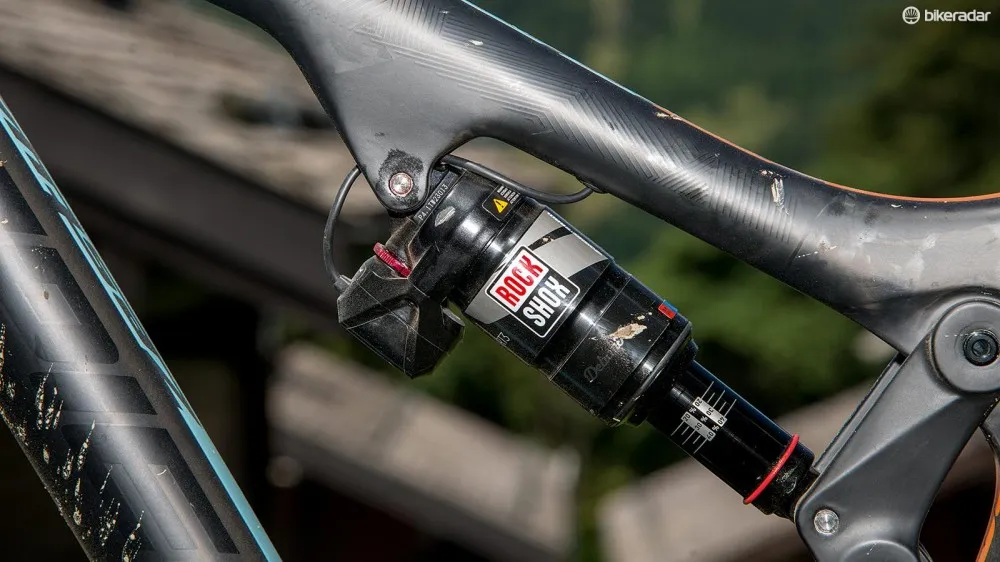
Electronic controls automatically choose the best compression setting
As well as updating the geometry, more than half a kilo of weight has been stripped from the frame. Some of that is down to the new titanium fixings, but more importantly and less exotically, most of that reduction has been achieved by mounting the shock to the top rather than down tube.
The reduced stress in that area has allowed Lapierre to remove a lot of material from the carbon layup for a much lighter tube. The shuttle that drives the shock has also been removed, though the neat collet axle pivots are present and correct.
While suspension travel remains the same at 150mm either end, there’s been a whole load of work done to the way it meters out that movement at the rear. It’s been made more progressive in the last third of the travel to offer better support deep into the stroke and it’s certainly more composed on big hits than the old bike and there’s plenty of supple initial grip too.
Oddly enough, Lapierre has moved to a shorter stroke rear shock despite keeping the same travel as last year. The firm claims this has improved heat management, although we’re not entirely sure how that fits with the laws of physics. Either way, we gave the bike a solid thrashing on some seriously big Alpine terrain and the Debonair sleeve-equipped Monarch keeps things controlled even on extended rough terrain.
A thirst for hard descending
When it comes to climbs or flatter terrain, the E:I shock system is truly impressive at preventing unwelcome pedal induced motion. The system uses a sensor mounted to the fork that communicates with a cadence sensor in the bottom bracket and control unit mounted to the steerer tube to decide whether the servo controlled shock should be locked out, in the pedal platform setting or fully open.
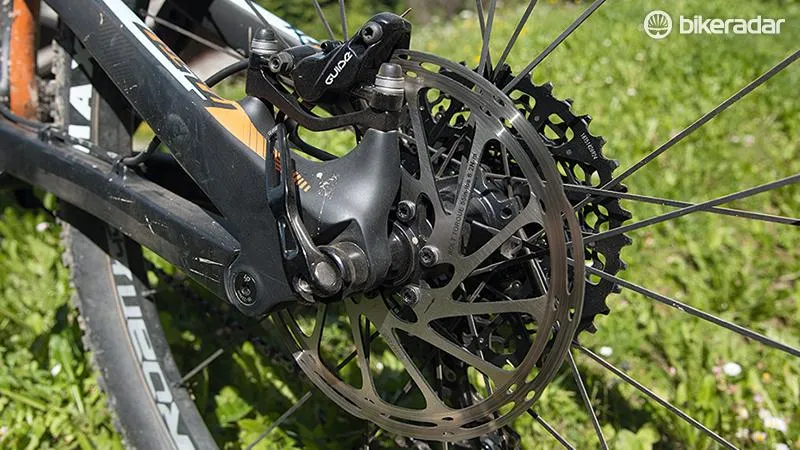
The smooth carbon brake mount looks great
If you’re pedalling on the flat, the shock will stay in the locked mode. Hit a bump and the brain will decide whether it should move the shock into pedal or open, depending in how big the bump is. Stop pedalling and the shock reverts into open mode.
It’s all very nicely integrated, from the low profile control unit, now mounted safely out of the way on the side of the steerer, to the battery unit on the down tube. It means the bike pedals like a much shorter travel machine and in operation the mode switching is barely noticeable, save for the whir of the servomotor.
The 35mm legged RockShox Pike fork up front really boosts front-end confidence and gives nice and tight tracking. It uses the less adjustable RC damper rather than the three-position-with-low-speed-compression RCT3 model, but we didn’t find that had much impact on outright performance.

The updated Zesty is crying out to be hurled down some sketchy descents
We did find that the Solo Air spring benefited from a full trio of Bottomless Token volume spacers in it to keep the bike sitting up on steeper trails. Part of that is because the Zesty AM really does encourage you to push hard on descents.
It’s a lively and involving bike and while super slacked out, mega long geometry rivals such as Mondraker’s Foxy C probably have the edge on high-speed control in rock garden or root field insanity, the Lapierre really does enjoy being picked up and hurled about, even taking sickeningly steep Alpine trails in its stride. It’s an object lesson in how a few small tweaks can really radically overhaul how capable a bike feels.
Okay, you can make those SRAM Roam wheels bend a fair bit before the tubeless ready Maxxis High Roller 2 and Ardent F/R tyre combo starts to reach the limits of traction, but as an all-round trail bike it’s hard to fault, especially when equipped with the efficiency enhancing E:I system.
